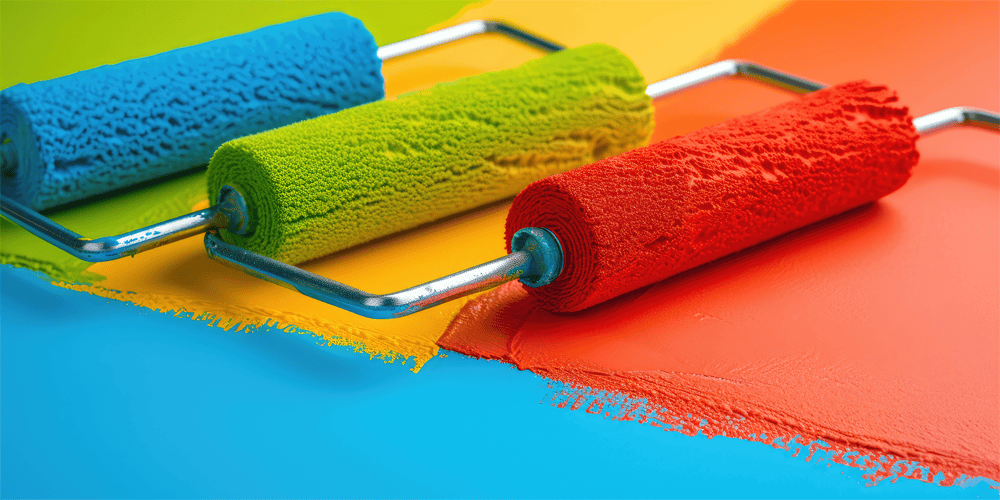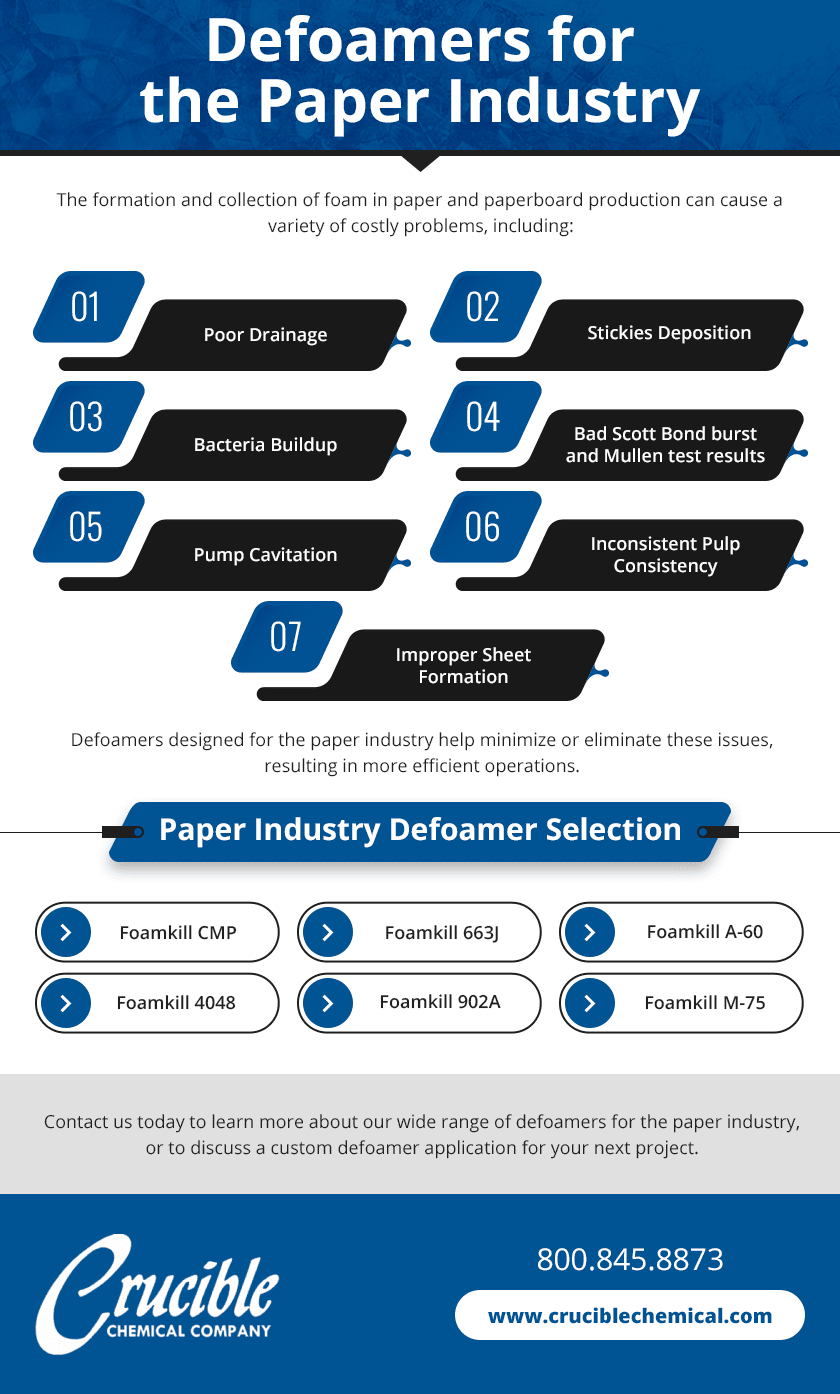Picking the Right Defoamer for Your Specific Application Demands
Selecting the appropriate defoamer for specific application demands is a nuanced procedure that requires mindful consideration of multiple factors, such as the foam type, operating, and tool conditions. Understanding the subtleties of defoamer performance-- including speed and persistence-- while additionally representing regulative and environmental factors is crucial. In addition, participating in trials and seeking advice from suppliers can provide useful insights. Browsing these complexities can be daunting, and the repercussions of a poor choice might be significant. What methods can be utilized to ensure an ideal option?
Understanding Foam Formation
Foam development occurs when gas is caught within a liquid, creating a steady framework of bubbles. This phenomenon can dramatically affect different commercial procedures, particularly in markets such as food manufacturing, drugs, and wastewater therapy. The existence of foam can prevent blending, reduce item high quality, and also cause functional ineffectiveness.
Foam usually creates as a result of a mix of aspects, including surface-active representatives, frustration, and the features of the fluid phase. Surfactants reduced the surface area stress of the liquid, promoting the formation of bubbles that can maintain and integrate. Frustration, whether from mechanical stirring or gas intro, improves bubble formation, resulting in boosted foam quantity.
Recognizing the auto mechanics of foam development is vital for markets intending to optimize their processes. By determining the specific conditions that advertise foam generation, organizations can apply techniques to minimize its effects.
Kinds Of Defoamers Available
Different sorts of defoamers are available to attend to the challenges presented by foam in industrial applications. defoamers. Broadly categorized, defoamers fall under 3 categories: silicone-based, non-silicone-based, and natural defoamers
Silicone-based defoamers are renowned for their efficiency and stability across a variety of temperatures and pH levels. They are commonly used in applications where solid foam reductions is necessary, such as in finishings, paints, and adhesives. Their reduced surface tension enables quick foam collapse.
Non-silicone-based defoamers, usually made from natural substances, supply an option for applications conscious silicone deposits. These defoamers can be more divided into polyether and ester kinds, each tailored to fulfill details formulation requirements. Non-silicone defoamers are frequently used in food processing and individual treatment items because of their compatibility with different solutions.
All-natural defoamers, stemmed from plant or animal resources, are getting traction because of their green profile. These products are specifically appealing in applications where governing compliance and sustainability are vital, such as in agrochemicals and biotechnology.
Selecting the best type of defoamer is essential for enhancing performance and ensuring compatibility with particular applications.
Secret Application Factors To Consider
When choosing a defoamer, it is important to take into consideration the specific application needs to make certain optimum efficiency. defoamers. Various industries have distinctive needs, such as food processing, drugs, or wastewater therapy, and each application may need special defoaming residential or commercial properties
Secret factors to evaluate consist of the medium in which the defoamer will certainly be made use of, whether it is water-based, oil-based, or a mix thereof. The temperature and pH degrees of the application can likewise considerably influence the performance of a defoamer. Additionally, compatibility with various other chemicals existing in the system is essential to stop damaging reactions that could endanger performance.
One more essential consideration is the lathering actions of the certain system. Understanding whether the foam creates quickly or gradually can direct the selection of a defoamer that targets the source successfully. The preferred rate of defoaming can affect the choice, as some applications require quick action while others may endure slower defoaming procedures.
Finally, governing and environmental factors to consider should not be ignored, especially in industries with strict compliance needs. Choosing a defoamer that straightens with these elements makes sure both performance and safety and security in the application.

Performance Screening Approaches
Examining the efficiency of a defoamer requires a methodical method to testing that accurately determines its performance in details applications. Numerous performance screening techniques can be utilized to ascertain the optimum defoamer for an offered solution.
One common approach is the bubble examination, which examines the defoamer's capacity to reduce foam volume over time. This examination includes creating a steady foam and after that adding the defoamer to observe the price of foam collapse.

Ultimately, picking the proper efficiency screening approach relies on the specific application and the type of foam being dealt with. Each technique uses valuable data that click to investigate can lead formulation changes and improve the efficiency of the defoamer in useful applications.
Best Practices for Choice


Next, consider the defoamer's efficiency in regards to speed of activity and perseverance. A quick-acting defoamer might be needed for processes where fast foam suppression is vital, while a more consistent formulation could be needed for extended foam control. Furthermore, examine the environmental effect of the defoamer, including its biodegradability and any regulative compliance demands.
Conduct tests with selected defoamers to establish their effectiveness in real-world conditions. By sticking to these finest practices, you additional info can improve foam control efficiency and guarantee the longevity of your procedures.
Conclusion
In recap, choosing the suitable defoamer demands a detailed assessment of numerous elements, including foam type, tool, operating conditions, and ecological considerations. Recognizing the distinct features of foam formation and the offered defoamer options is critical. Furthermore, using effective performance screening techniques and sticking to ideal methods during the selection procedure will certainly improve the possibility of attaining optimal defoaming results. Eventually, an educated selection method will certainly address particular application needs and minimize foaming challenges successfully.
Selecting the suitable defoamer for particular application demands is a nuanced process that demands careful consideration of multiple elements, such as the foam kind, tool, and operating problems.Picking the appropriate defoamer is essential for attaining optimal efficiency in foam control applications. A quick-acting defoamer may be needed for procedures where rapid foam suppression is vital, while a much more persistent solution might be required for extended foam control.In summary, choosing the suitable defoamer requires an extensive analysis of numerous variables, including foam kind, medium, operating conditions, and environmental considerations. Understanding the my company one-of-a-kind characteristics of foam development and the offered defoamer options is important.